Floating solar market will be as big as onshore solar sector, says Oceans of Energy CEO
Home Marine Energy Floating solar market will be as big as onshore solar sector, says Oceans of Energy CEO
January 15, 2024,
by
Nadja Skopljak
The industry needs to start shifting its focus from wind farms to energy farms as we have limited space which we need to make use of in an efficient way. A synergy of offshore wind and floating solar is the way to go. “If you only fill 20% of wind farm space with floating solar, you can already double the amount of energy that this energy farm gives over the year, and if you use more of the space, you can go up to five times more energy per year of the same area of the sea,” according to Allard van Hoeken, Founder and CEO of Oceans of Energy.

Moderated by Simon Stark, CTO for the Dutch Marine Energy Center (DMEC), the Multi-Source Offshore Energy Parks: Paving the Way session at Offshore Energy Exhibition & Conference 2023 in Amsterdam focused on how an offshore energy park performs if different sources are combined, as well as how the energy system can look in the future if we can use all the innovations.
Don Hoogendoorn, Co-Founder and CTO of SolarDuck, believes that it is important to start focusing on energy farms and not only on wind farms as we have limited space so we need to make use of it efficiently. This requires a bit of a mind shift in the government and shareholders. Speaking about the Netherlands, Hoogendoorn expects that the combination will include solar, wind and energy storage to create a stable grid for the future of the Dutch economy.
Van Hoeken said that the benefit of having both offshore wind and floating solar is that we have more continuous electricity coming from the sea to the shore: “Together you have more continuity and much better use of the infrastructure, those cables are already paid for now and they all go all the way to the offshore farms, but they are not used all of the time. So adding solar and storage will actually mean much better utilization of the same cable that is already there.”
-

Posted: 8 months ago
Daniel Buhagiar, CEO and Co-Founder of FLASC B.V., mentioned that the co-location aspect in FLASC’s case offers the advantage of scheduling the output, first making it more stable, but then also making it better match the demand because demand is something that also is available in itself.
The panelists emphasized the vast opportunities floating solar brings to the industry, with Hoogendoorn stating that it has a number of advantages compared to offshore wind: “The nice thing about solar is that it is very scalable, much more scalable than offshore wind. So of course, it takes a while to get there, but then we can scale on a gigawatt scale and the ambition is in 2030 to deploy at least one gigawatt per year. That is the North Sea, but the world is much bigger.”
Van Hoeken believes that there is a really exciting roadmap for all of us as there will be many more technologies. He expects the floating market to be really big, as big as the onshore solar sector. He stated that floating solar is an “offshore engineer’s dream”, maintenance will be much lower than in offshore wind, there are no moving parts, and monitoring and maintenance technologies will be different since they can be done much more remotely.
“The market will be really big. If half of the world population is near the coast and is gonna use this, it means we are going to be as big as the onshore solar sector is nowadays. Most people think that solar might add 20% or 30%, but we add 400% in total energy output, energy generated per year. So the peak capacity of solar, if you install it, is much higher than five times. It is about 15 times or 18 times. Those are amazing numbers and, and most people do not realize it,” Van Hoeken said.
At the session, Pim Somers, Project Manager of Nature-Friendly Offshore Energy at The North Sea Foundation, took the stage to discuss the ecological perspective, noting that the North Sea is currently very busy with activities that have an effect on the ecosystem, besides the additional pressures from climate changes that will continue happening.
Somers noted that we should consider the North Sea as the nature area that it is, as the basis of the whole system, and that an ecosystem-based approach should be applied in not only looking at the direct effects but also the indirect effects and all the cumulative effects with other sectors that are also taking place in the area.
The North Sea Foundation project manager claims that without taking into account ecology, we will not be able to achieve the energy transition and that nature is our ally in the energy transition: If you would imagine the system being this Jenga tower, we have taken out too many pieces, making the system less stable. So when applying new human activities, we should take care to add blocks back into the system to make it more stable rather than further destabilizing it. So when looking at multi-use developments, we should have an ecosystem approach.”
We know we are looking into effects of offshore wind and also of offshore solar, but we should also really look into this combination because often these impacts are much higher than only the sum of the separate impacts,” Somers said.
Watch the full session:
We have just launched a new, dedicated site for OEEC! Follow for all the updates related to the 2024 edition:
Offshore Energy Exhibition & Conference
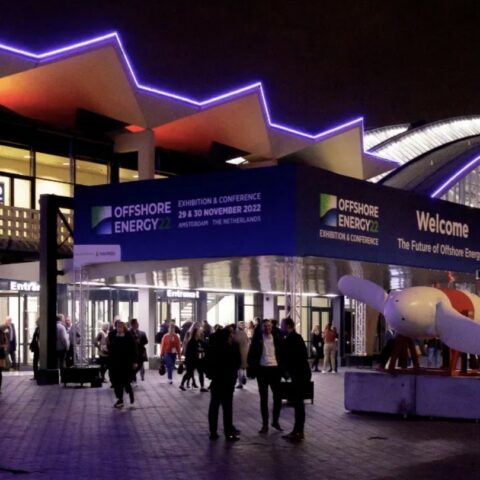
Read all the news from OEEC 2023 on Offshore Energy.
-

Posted: about 1 month ago
-
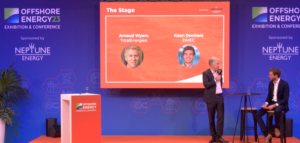
- video
Posted: 25 days ago
-

- video
Posted: 19 days ago
-
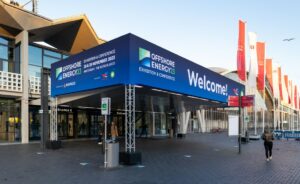
Posted: about 1 month ago
-
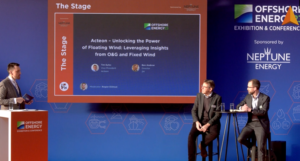
Posted: about 1 month ago
-
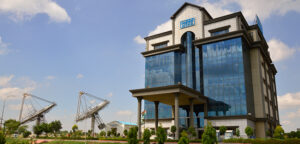
Posted: 17 hours ago
-

Posted: 3 months ago
-
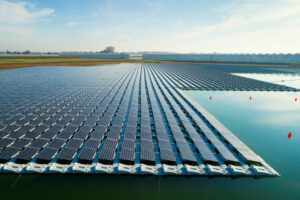
Posted: 20 days ago

